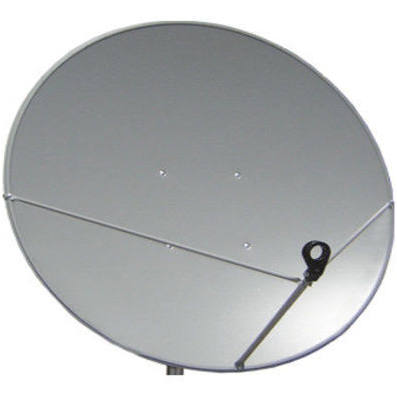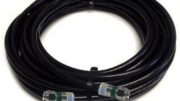Simple answer: no, and you haven’t needed two dishes for a while. Want to know why?
A little bit about getting DIRECTV in Alaska and Hawaii
Obviously, Alaska and Hawaii are far away from the continental US. Most of DIRECTV signals are focused on the continental US. Expanding the focus area through all that open sea would be a waste, and allowing US signals over a lot of Canadian soil would actually be against several laws from several countries. But yet, DIRECTV wants to serve customers in the 49th and 50th states. So what can be done?

The answer is a specially-designed larger dish. The dish used in Alaska and Hawaii is about 20% larger than a regular DIRECTV dish and it is round. It’s not much more useful for people outside those two states, but it does a great job of getting every last bit of signal into those more distant regions.
Historically, if you were in Alaska and Hawaii, you’d actually need TWO dishes to get all the signals you needed. One picked up the primary locations at 99, 101, and 103, while the other picked up the secondary locations at 110 and 119.
Now: you only need one dish
DIRECTV has phased out satellite broadcasts from the 110 satellite completely. All national programming is gone from the 119 satellites, leaving only a few markets with standard definition local channels broadcasting from that satellite. None of those markets is in Alaska or Hawaii. So, a single dish will work just fine. If you have a two-dish solution, you can leave it where it is, but if you’re just getting into DIRECTV you will only need one dish.
Can you get 4K in Alaska and Hawaii?
Definitely. You can get 4K with any Alaska or Hawaii dish, but the latest ones are specifically designed for those broadcasts. Again, if what you have is working, there’s no need to change. But, if you’re putting in new service, you’ll be completely future-proof.
Does DIRECTV offer a SWM-enabled dish for Alaska and Hawaii?
They don’t, and I have a feeling that some of that has to do with the extreme weather in Alaska. This means that with a new installation you’ll need to run six lines into the house and use a SWM-30 multiswitch. While this is a bit of an annoyance, it’s generally something you can work around with a little bit of time.
A word about using the Alaska/Hawaii dish anywhere but Alaska and Hawaii
I’ve said before that I don’t recommend using the Alaska/Hawaii dish anywhere but Alaska and Hawaii. The amount of signal that it will bring to a continental-US-based installation is barely more than what you’d get from a Slimline dish. The dish itself is bigger and heavier, and requires an AIM meter for installation. It’s just not worth it. If you suffer from rain fade issues, you’re better off just making sure your dish is perfectly aimed rather than replacing it with one of these dishes. Plus, with DIRECTV’s Signal Saver technology, you’ll get an automatic switch to streaming if you lose signal. You’ll need a Genie DVR for that function, of course.
If you have questions about your DIRECTV installation and how it can be upgraded, call the experts! No one serves the DIY community like Solid Signal. We’re the experts, with over 20 years of experience. Check out the great selection of parts at SolidSignal.com! These are the exact same parts you’ll find on installer trucks. Need help? Call our trained technicians during East Coast business hours. We’re here to give advice before, during, and after the sale. Call 888-233-7563 or fill out the form below. We’ll get right back to you!





